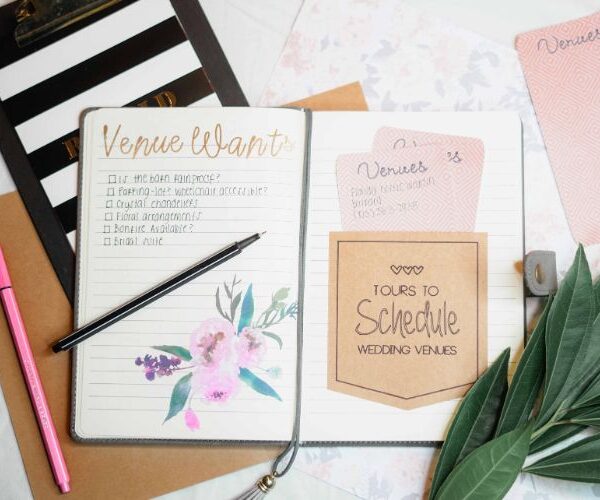
Wedding photos capture cherished moments that couples will treasure for a lifetime. However, the editing process can make or break the final outcome. In this guide, we’ll explore common wedding photo editing mistakes to avoid and provide practical solutions for achieving stunning results.
Wedding photo editing is essential for preserving the magic of the big day. However, many make common mistakes that can diminish the charm of their photos. To avoid these blunders, it’s crucial to be mindful of certain aspects during editing. For instance, removing unwanted objects can enhance the overall look of the image.
Utilizing Adobe Lightroom and working with raw files can provide more flexibility and control over the editing process. Moreover, understanding different editing styles can help achieve the desired aesthetic for the wedding album. By steering clear of these errors and employing effective editing techniques, you can ensure your wedding photos truly shine.
Common Wedding Photo Editing Mistakes

When editing wedding photos, it’s crucial to avoid common mistakes to ensure stunning results. Ignoring color correction can lead to dull or unrealistic images. Using excessive filters and presets can make photos look unnatural. Poor cropping and composition can detract from the beauty of the moment captured. By being mindful of these errors, you can enhance the overall quality of your wedding photos and preserve precious memories flawlessly.
Over-editing the Photos
Over-editing photos refers to the excessive use of editing techniques or software to alter the appearance of an image beyond its natural or intended state.
Here are some points detailing the consequences and characteristics of over-editing:
- Loss of Authenticity: Excessive editing distorts the original scene, leading to artificial-looking images.
- Unnatural Appearance: Over-editing creates unrealistic colors, textures, and lighting effects, making the image appear unnatural.
- Distracting Elements: Introducing unnecessary elements detracts from the focal point, such as heavy contrasts or filters.
- Reduced Quality: Heavy manipulation can degrade image quality, leading to pixelation and loss of detail.
- Inconsistent Style: Over-edited images may not align with a photographer’s established aesthetic, creating inconsistencies.
- Negative Reception: Viewer feedback may be negative due to a preference for natural-looking photos.
- Loss of Emotional Impact: Over-editing can distance viewers from the authentic experience captured, reducing emotional resonance.
Ignoring Color Correction
Color correction plays a crucial role in preserving the authenticity of the wedding day moments captured in photos. By using professional color tools, photographers can ensure an accurate representation of colors in the wedding gallery. This enhances the mood of the wedding ceremony photos, making them vibrant and true to life.
- Composition: How elements are arranged in a frame, impacting visual appeal and focus.
- Lighting: Key factor influencing mood, visibility, and atmosphere in photography.
- Contrast: Difference in brightness or color between elements, adding depth and interest.
- Focus: Determines sharpness and clarity of subjects, guiding the viewer’s attention.
- Perspective: The angle from which an image is captured, affects the perception of depth and scale.
Using too Many Filters and Presets
When editing wedding photos, it’s tempting to rely too much on filters and presets. However, this can make every photo look the same, losing its uniqueness. Instead, use filters sparingly and explore a range of tools like the healing tool. This ensures each image retains its individual charm while still looking its best.
Positive Impacts:
- Enhanced Creativity: Filters and presets spark creativity and encourage exploration.
- Time Efficiency: They reduce editing time, ideal for tight deadlines.
- Consistency: Helps maintain a consistent look, useful for branding.
- Learning Tool: Valuable for beginners to learn various editing techniques.
Negative Impacts:
- Loss of Originality: Over-reliance can lead to a lack of uniqueness.
- Overuse: Can result in an artificial look, detracting from authenticity.
- Limited Customization: Restricts customization options.
- Dependency: This may hinder the development of essential editing skills.
Poor Cropping and Composition
Cropping and composition are crucial in wedding photography. They affect how the story of the wedding day is told through images. By using the crop tool wisely, photographers can enhance the visual appeal and draw viewers into the special moments captured in the photos. It’s important to pay attention to framing, balance, and focal points to create captivating compositions.
Cropping: Involves trimming or framing an image. Poor cropping can clutter compositions or obscure important subjects.
Composition: The arrangement of elements within the frame. Poor composition leads to unbalanced or chaotic images lacking visual interest.
How to Fix Wedding Photo Editing Mistakes

To improve wedding photo editing, mastering tools like Adobe Lightroom and Photoshop is essential. This software provides powerful features for adjusting white balance, exposure, and other aspects crucial for portrait photographers. With proper navigation of these tools, photographers can correct mistakes and enhance the beauty of their images from the portrait session. Learning effective editing techniques empowers photographers to create stunning wedding photo albums.
Seeking Feedback from Experts
Seeking feedback from others, such as peers or professional photo editors, can offer fresh perspectives on editing wedding photos. This feedback is crucial for identifying areas for improvement in your wedding gallery. By incorporating constructive criticism, photographers can refine their skills in Adobe Lightroom and develop a keen eye for quality editing. It’s an essential step in enhancing the overall appeal of wedding day memories captured through photography.
- Purpose: Clearly define why you’re seeking feedback – for validation, improvement, or perspective.
- Target Audience: Choose the right people to provide feedback, considering their expertise and perspective.
- Clarity in Communication: Communicate what aspect you’re seeking feedback on, providing the necessary context.
- Open-mindedness: Be open to both positive and constructive criticism; view feedback as an opportunity for growth.
- Active Listening: Listen attentively to feedback, taking notes to ensure accurate understanding.
- Reflect and Analyze: Reflect on feedback received, analyzing its validity and how it can be applied.
- Follow-up: If needed, seek clarification or additional feedback through further discussion.
- Express Gratitude: Show appreciation to those who provided feedback, fostering positive relationships.
Learning from Mistakes
Reflecting on past errors while editing wedding photos is crucial for growth. By analyzing the impact of corrective actions taken, photographers can continually enhance their skills. Similarly, comparing before-and-after pictures acts as a visual guide, showcasing progress in editing proficiency. This reflective practice ensures that mistakes are recognized and rectified, ultimately leading to improved results and satisfied clients.
- Attention to Detail: Ensure meticulous attention to color balance, exposure, composition, and retouching.
- Understanding Client Preferences: Communicate effectively to align editing with the couple’s vision.
- Technical Skills: Master software like Adobe Photoshop, understanding masking, color grading, and retouching techniques.
- Consistency: Maintain a consistent editing style throughout the wedding album for a cohesive look.
- Backup and Version Control: Implement robust backup systems and version control to prevent data loss and ensure the reversibility of edits.
- Feedback and Reflection: Seek feedback from clients and peers, and reflect on past projects to identify areas for improvement.
- Quality Control: Conduct thorough quality control checks before delivering final photos to ensure they meet agreed-upon standards.
Wedding photo editing is a skill that demands practice, patience, and careful attention to detail. By sidestepping common editing blunders and embracing effective techniques, photographers can enhance the allure and significance of wedding photos. We encourage readers to apply the tips and tricks shared in this guide to refine their wedding photo editing abilities and craft enduring memories for their clients.
Wedding photo editing tools such as Adobe Lightroom, Adobe Photoshop, Capture One, Luminar, and PhotoScape offer an array of editing features suitable for photographers of all skill levels.
For more informative blogs keep visiting here.











